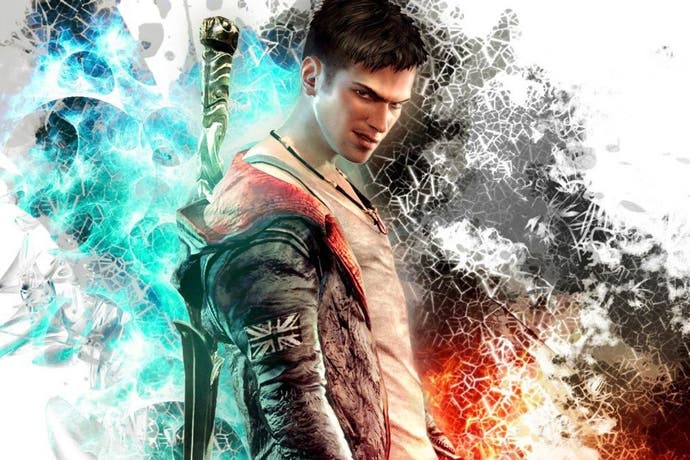Face-Off: DmC Devil May Cry Definitive Edition
Better the devil you know?
We've already established that the PlayStation 4 version of DmC Devil May Cry: Definitive Edition offers a palpable upgrade over both Xbox 360 and PS3 versions of the game, with 60fps gameplay moving Ninja Theory's last-gen reboot more closely into line with Capcom Japan's origin titles. In addition to the faster, smoother gameplay, native 1080p visuals also deliver the welcome boost in sharpness expected from a title running on a current-gen console.
However, despite the undeniable upgrades, we also came away a just little disappointed that the PS4 version doesn't quite manage to deliver the solid 60fps gameplay easily achievable on the PC - something we expected from the level of hardware on offer inside Sony's console. So the question is, can the Xbox One version iron out the kinks found in the PS4 game and hand in the 'definitive' experience we are looking for from a current-gen remaster? Or will its less capable GPU hand in a less stable experience?
From a visual perspective, we're mostly looking at parity between PS4 and Xbox One - with just a few caveats. Anti-aliasing coverage is a little better on Microsoft's system, although the difference is largely academic, visible only when zooming in on still screenshots. The same post-process algorithm is used across both consoles (creating a sharper image than the PC game) and in motion it's basically impossible to spot the difference.
Instead, the main variable in graphical quality centres on how well the artwork is displayed at a distance and from steeper angles. The Xbox One and PC versions of DmC feature a high level of anisotropic filtering that keeps textures looking crisp and clear, whereas the PS4 game uses a simpler trilinear technique instead. This results in textures appearing blurry from a distance on the Sony platform, diminishing image quality significantly compared to both PC and Xbox One. In comparison, the less aggressive anti-aliasing implementation and the high levels of AF allow the Xbox One to display slightly sharper texture details than the PC release on artwork far away from the camera.
From a hardware standpoint there's no reason we're aware of why Sony's console can't deliver similarly decent texture filtering to the Xbox One and PC - after all, there's an immense level of commonality between the systems. It's not exactly clear why developers are having problems in this specific area on Sony's console, and it's something we're discussing with contacts right now, with a view to getting to the bottom of what is a rather bizarre mystery. Anisotropic filtering is bandwidth intensive - and that's a precious commodity on both PS4 and Xbox One, but assuming the textures aren't being kept in ESRAM, the Sony console has more bandwidth than its Microsoft counterpart and should be able to handle the job just as well, if not better.
Alternative comparisons:
Cutting through the extra texture blur on the PS4, the core artwork looks identical on both current-gen console versions of DmC, with the PC version exhibiting the same assets. Likewise, effects work is very similar with just a few changes: motion blur takes a hit on the consoles, while alpha effects and depth of field remain unchanged. Interestingly, higher quality textures are present in some scenes in the PS4 and Xbox One versions of DmC when compared to the PC game, while in other areas the same art is present on all formats. In most cases artwork is a match between platforms, with blurry textures deployed across less important environment surfaces - a reminder of the title's last-gen heritage.
However, these random variances in texture work suggest that background streaming issues could be the culprit, with the older consoles and PC featuring less refinement in this area - perhaps not surprising, bearing in mind that this was an area of weakness for Unreal Engine 3. Even so, despite the lavish amounts of RAM available on both current-gen platforms, there are still noticeable transitions between mip-maps as details move closer to the camera. Streaming is certainly improved over last-gen and PC, but not to the extent it could be given the hardware resources available.
From a technical perspective, DMC doesn't pack the same graphical punch as it did two years ago - technology and visual standards have moved on significantly - although the combination of dynamically shifting environments, and the mix of shader effects and lighting still appear pleasing to the eye in 1080p, creating plenty of exciting cinematic moments that complement the frenetic combat on offer. Ninja Theory has always produced eye-catching games from an artistic standpoint, and DmC is no exception.
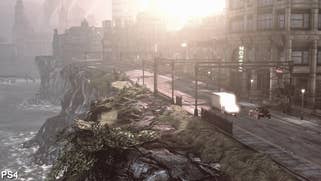
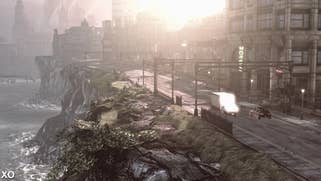

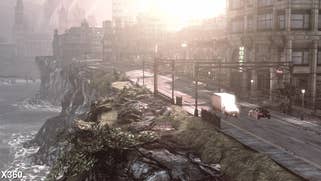
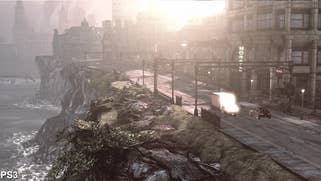
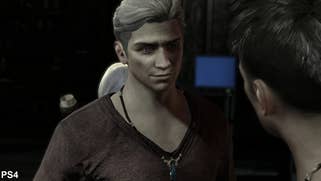
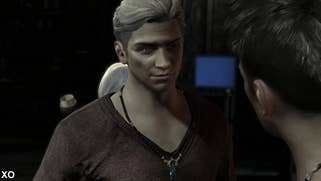





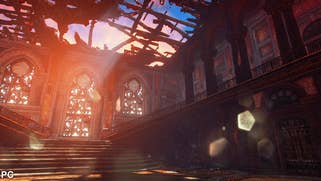


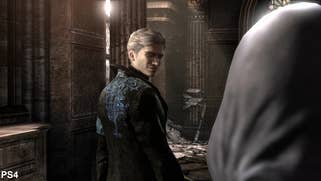

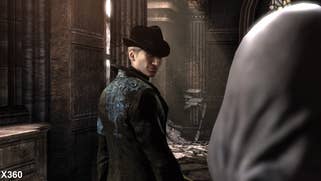
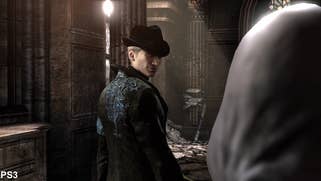



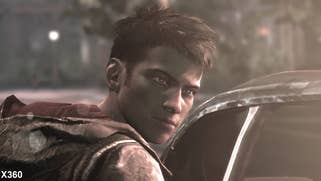

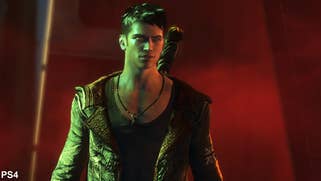
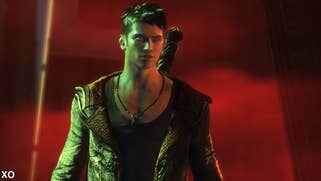
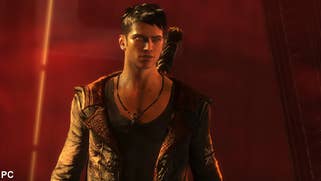
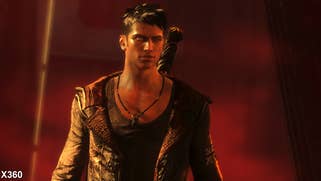
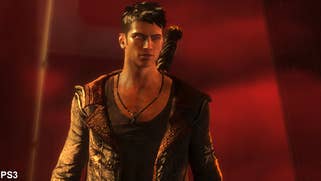

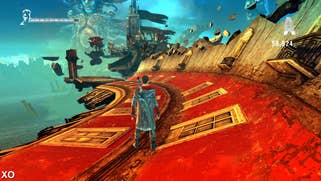
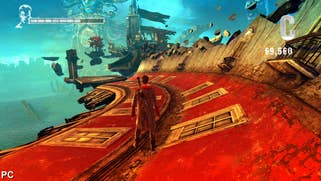

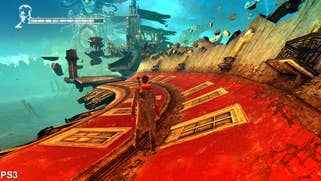
In terms of performance, both consoles target a 60fps experience, and while frame-rates aren't locked at that level, DmC regularly delivers smooth portions of gameplay that are free from obvious issues. However, during combat we see some brief interruptions in the form of dropped frames or tearing that prevent PS4 and Xbox One versions from providing the same seamless 60fps gameplay as the existing PC edition.
PlayStation 4 favours a predominantly v-synced set-up with minimal screen-tear, although this does seem to vary from scene to scene. In some sequences the engine appears intent on more strictly adhering to v-sync, dropping frames when the renderer goes over budget, while in others the game is allowed to tear, keeping the frame-rate up at the expense of interfering with image integrity. Curiously we also see occasional frame-time dips to 50ms - something that's quite jarring on a game working to a 16ms render budget. In comparison the Xbox One game more consistently adopts the adaptive v-sync approach - where frames are torn if the engine can't sustain its target frame-rate. This leads to more tearing when the engine is under load, but as a consequence frame-rates are slightly higher as a result and there are fewer dips in controller response. Split-second frame-time spikes occur on Xbox One too, but not quite with the same frequency found on PS4.
Between the two, the mild wobble caused by the tearing on Xbox One is a little more obvious, but it's worth pointing out that both consoles regularly deliver a perceptual 60fps experience where many small blips in performance have no noticeable effect on gameplay or the apparent smoothness of the action. Much of the time, frame-rate drops pass by largely unnoticed unless there are sweeping changes in camera positioning or character movement. For the majority of gamers, the mild performance issues in DmC shouldn't be a problem, although we imagine that seasoned Devil May Cry players may notice inconsistencies when stringing together combos during moments where the game fails to sustain the desired 60fps target.
The Definitive Edition of DmC clearly provides a vastly superior gameplay experience to the last-gen console versions, and as a result, the Xbox One and PS4 titles play more similarly to the titles in Capcom Japan's original Devil May Cry series. But at the same time, the fact that neither console manages to achieve a locked 60fps is disappointing given how easy it is to sustain this level of performance with the PC version operating at its highest preset. For example, back in the day, we reviewed the PC version of the game on a system with a Core i5 750 and a Radeon HD 7870, achieving a rock-solid 1080p60 experience, without the need to overclock and with considerable overhead left, suggesting that this game will run just fine on lower-tier hardware. With that in mind, there's the sense that while competent enough, the current-gen console versions should be similarly pristine.
DmC Devil May Cry: Definitive Edition - the Digital Foundry verdict
The jury's out on whether DmC: Definitive Edition really is the best version of the game given that it doesn't quite deliver a seamless 1080p60 experience - something that PC owners have been enjoying since the game's release in 2013. However, from a console perspective the new PS4 and Xbox One editions provide a clear and welcome upgrade over the 30fps last-gen outings. The native 1080p visuals deliver a nice boost in sharpness and clarity, while the gameplay feels more fluid and responsive - DmC simply feels more like a Devil May Cry title, and that may make the Definitive Edition worthy of a double dip for fans of the series.
DmC is a decent port across both current-gen consoles, although both versions have some plus and minus points to consider. The tearing on the Xbox One is a little more intrusive than the short dips in frame-rate on the PS4, though both manage to deliver extended segments of solid 60fps gameplay. Image quality is basically identical, but the lack of anisotropic filtering harms the presentation of the PS4 game, leaving blurry artwork displayed on-screen far more frequently than the Xbox One game, which is clearer and cleaner in comparison. With this in mind, we're inclined to give the Xbox One the final nod here: the dips and tearing are intermittent, while the reduced texture clarity on the PS4 is a more frequent annoyance. That said, when assessing both titles overall, both are still solid releases, and the Definitive Edition is well worth picking up if you don't have an Xbox One, or simply prefer the Dual Shock 4 controller.
From a technical perspective the PC game still offers up the best experience overall. A solid 60fps provides low latency gameplay that feels consistent, along with the uninterrupted silky smooth motion provided by a locked frame-rate. For hardcore fans it's simply the best way to play the game. Of course, there are compromises in choosing the PC game: image quality isn't quite as sharp as the PS4 and Xbox One versions, and there's no compendium of DLC content or bonus costumes included in the existing game as standard. Our take? The hardcore should stick with (or consider investing in) the PC version, while others might like to consider the console versions. They're not quite as good as they could - and should - have been, but the boosts provided are a night and day difference over the last-gen versions.
